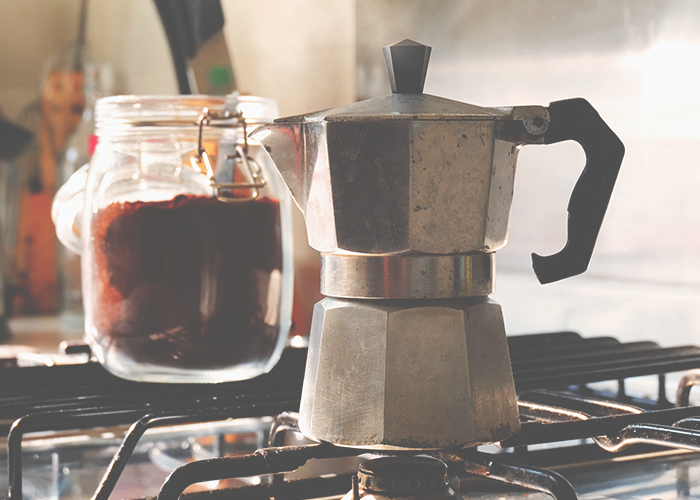15 One-Time Purchases That Can Help You Save Money In The Long Run
When it comes to all things domestic, I’ll be the first to admit I’m no Susie Homemaker, and I’ve only lived on my own since last fall. However, in that short amount of time, it’s become clear to me that there are certain household items worth investing in, which make life better in the long run. Sometimes, money is better spent up-front, because we are paying our future selves, who won’t have to be going out of pocket repeatedly.
Even in the short time I’ve lived on my own, I’ve invested in nearly all the items below, or know other people who have bought them for themselves, and they are all the type of items that pay for themselves in one way or another, depending on your lifestyle. Check out the 15 items below for suggestions as to what you should consider investing in in your own home.
1. Soda stream
Cost: $79.99 (plus cartridge replacements)
Chelsea and I use her Soda Stream pretty much every week when we’re making mixers for cocktails, or if we’re just in the mood for some bubbly H2O. (This is a bigger happening in the warm months, obviously, but that think is getting used essentially every day come summer.) If you’re at all a carbonated drinker, investing in one of these bad boys will save you money over the long run, because you’ll never have to run out to the store for a $2 bottle of seltzer again, and you’ll be able to make any number of homemade sodas for every occasion (and every cocktail).
2. Slow cooker + freezer storage units
Cost: $40.39 + $10 – 15
Slow cookers are incredible not only as a result of their versatility and ease of use, but because they also use less energy than ovens do. I also find that slow cookers and crock pots encourage you to cook and meal prep in bulk, which means less takeout and Seamless-ing during the week. #Win. That being said, when investing in a slow cooker, it’s also a great idea to buy quality freezer storage units that will hold all the delicious food you prepare in bulk.
3. A cook-ready pantry.
Cost: Varies
Chelsea wrote a post called 19 Ingredients Every Home Cook Needs In Their Kitchen which covered all items one should have on hand to make delicious food in a pinch. These are the perfect kinds of simple investments that will help you save money over the long run because it makes cooking your own food easier and more efficient. Investing in a few higher quality ingredients that make your food taste flavorful (and able to fight the temptation of takeout) is something you’ll enjoy for much longer than a burrito charged on your Seamless account.
4. Smart storage for off-season clothes.
Cost: $13+
Taking care of your clothes is essential if you expect them to last multiple seasons. Since my closet is so tiny, I’m forced to rotate my wardrobe and put away my off-season clothes into long-term storage. Clear plastic bins that fit under the bed are a perfect way to store clothes, and vacuum sealed bags are another great way to condense items so that they fit into closets. Investing in a few of these space-saving solutions will ensure that your clothes retain their integrity for longer and will mean you spend less to replace them each season.
5. A desk emergency kit that will keep you from spending at the office.
Cost: Varies
A while back, I put together an infographic about the smart desk essentials that will keep you from spending on pricey office lunches. Depending on what you decide to put into your pantry, the price of setting this up will vary. The point is, having a few items that will make the experience of eating at your desk feel somewhat ~luxurious~ will change the way you #lunch. Things like interesting spices, good olive oil, and actual silverware will instantly upgrade your daily routine, allowing you to save money all year long.
6. A smart power strip.
Cost: $15+
I can’t take credit for this one because my fiancé was the one that picked this up for our apartment. Smart power cords are energy efficient and this article describes how the process works saying, “Smart power strips, on the other hand, work to reduce your power usage by shutting down power to products that go into standby mode. Doing so may save you some serious cash. Statistics vary, but experts say standby power consumption in an average home ranges from five percent to ten percent of your household energy consumption.” Pretty nifty, huh?
7. Flash drive.
Cost: $10-ish
Ever since I invested in a few heavy-duty flash drives (and a couple of external hard drives) I have revolutionized the way I store movies, music, pictures, etc. This article speaks to the value of flash drives saying, “A flash drive has saved my cookie during hardware crashes and it has also saved a lot of money in terms of burning CDs for software installation packages off the network. In short, it’s invaluable.” These bad boys are definitely worth investing in!
8. Energy-efficient light bulbs.
Cost: $12+
Once again, I can’t take credit for this one, as commenters here and on our video channel were the first ones to remind us about them. Energy efficient light bulbs, “Typically use about 25%-80% less energy than traditional incandescents, saving you money, and can last three-25 times longer.” Dang. These bulbs do seem a little pricey at first, but when you consider how much lower your electricity bill is and how little you’re replacing them, it’s a more than fair tradeoff.
9. Basic tool kit.
Cost: The essential items vary from $5-$99
We talk alot about DIY here on TFD, and the value in having the ability to do basic home repairs yourself. Every homeowner should have a toolbox filled with the essentials, so they can have the capability to fix items that break. Owning things like a hammer, cordless power drill, wrench, screwdriver, nails, etc. make a world of difference in times of need. Investing in a basic toolkit up front will mean you can hold onto items longer, and you won’t have to call a repairman for every little thing that befalls you.
10. Budget programmable thermostat.
Cost: $70-$125
While there is some controversy as to whether or not programmable thermostats actually save you money, it seems like the problem lies in the way people use them. Programmable thermostats are meant to heat and cool spaces on a set schedule depending on when you are and aren’t home. However, people crank them way too high or way too low and offset the potential savings. This article explains how to actually use a programmable thermostat, and once you get the hang of it, it has the potential to save you a good deal of money each year.
11. A Road bike (as an alternative to driving a car).
Cost: Depending on how much you’re comfortable spending, anywhere from $200-$500
If you live in an area where they have public bike shares available, you should obviously spring for that instead of buying one for yourself. Alternatively, if you feel safe biking in the city where you live, investing in a bike can be a great alternative to driving a car. You’ll save money on gas and ongoing car maintenance, and you can supplement your bicycling outings with public transportation if needed. There are great articles that guide you through your first bike-buying process here and here. Be sure to check out these great websites for buying bikes such as Craigslist, Ebay, or Amazon. Make sure you do significant research as to what kind of bike would works best for you — there are a lot of options out there, and it’s important to know what you want.
12. Yoga mat + set of basic free weights.
Cost: $19.95 + $24.99
Investing in a set of weights and a yoga mat can be a great alternative for individuals looking to keep their fitness routine but don’t want to spend money on pricey monthly gym memberships. If you are among the select few who do use every machine at the gym, then a membership might be worth it for you. However, if you’re relying on weights and cardio for your workouts, purchasing the essentials and keeping them at home for everyday use is a smart option. (If you’re a strength training newbie, be sure to read a few guides on how to pick the right weight set.)
13. Your car’s air filter.
Cost: $15-$25
Changing out your car’s air filter saves you money in the long run because when you do change it, you can save up to 14% on your car’s gas bill. When I used to get my oil changed, I used to think the guy working was trying to get money out of me by saying that I really needed to change my air filter. However, after doing research I realized that they actually do help your car’s fuel efficiency and will save you a bit of money in the long run.
14. Amazon Prime membership.
Cost: $99 (or try a free 30-day trial)
If you order stuff off of Amazon frequently, then signing up for an Amazon Prime membership could be worth it for you — it can save you hella money. The upfront cost of $99 bucks won’t break the bank, and you can reap the benefits of free 2-day shipping and savings all year long.
15. A heavy-duty phone case.
Cost: $50+
Anyone who knows me knows how clumsy I am, and needless to say, having a protective iPhone case has been a complete lifesaver for me. I’ve dropped my phone on the pavement dozens of times, and each it drops my heart stops. I think about all the money that my iPhone case has saved me over the years and I realize it’s probably been the most successful investment I’ve ever made. Here’s a list of the highest-rated iPhone cases and I actually pair it with a protective case for the glass that goes on the front of the phone. Better safe than sorry!
References:
- 25 Gadgets That Actually Save Money
- 27 Gloriously Simple Things That’ll Save You So Much Money
- 10 Expensive Things That Will Save You Money in the Long Run
- 8 Products That Save You Money in the Long Run
- These 21 Amazingly Simple Items That Will Save You So Much Money
Image via Unsplash





